Off late there has been a clamoring among every hue & sundry individual in India - from bimbette socialites to pseudo-secular intellectuals to self-appointed guardians of “India’s moral fabric” [WTH....on Earth is that even supposed to mean] – asking for the “World Community” to get together and “declare Pakistan as a Terrorist Nation”.
Ask them what entails the declaration of a country by this “World Community” as a Terrorist Nation, and you would see them scurrying back to seek refuge amongst their own kind at the nearest Autobiographical book launch party of a 60-year professional wannabe Junior Artist.
Sorry to break your notion of World Community rising up in defiance of tyranny to declare Pakistan a State Sponsor of Terrorism [the right term as opposed to “Terrorist Nation”], the imposition of the title & honor of State Sponsors of Terrorism is essentially based on the sole discretion & prejudices of the towering [and the others cowering in front of it] United State of America....Hoooolaaaalaaa!!.
“Countries determined by the Secretary of State to have repeatedly provided support for acts of international terrorism are designated pursuant to three laws: section 6(j) of the Export Administration Act, section 40 of the Arms Export Control Act, and section 620A of the Foreign Assistance Act. Taken together, the four main categories of sanctions resulting from designation under these authorities include restrictions on U.S. foreign assistance; a ban on defense exports and sales; certain controls over exports of dual use items; and miscellaneous financial and other restrictions.
Designation under the above-referenced authorities also implicates other sanctions laws that penalize persons and countries engaging in certain trade with state sponsors.”
If you argue with all the conviction, of POTUS accusing Iraq of developing WMD prior to its invasion, that the UN is a powerful body and can impose similar sanctions, then all I’d like to say – Please go back to your knitting.
Ok....now that I have thrown enough jargons and quoted sections of law to [hopefully] establish my heightened level of intelligence and intellect, it would be wiser to state some of the most obvious implications of this imposition of this much un-coveted title on the target state.
-
A declaration of a nation as a Terrorist State is accompanied by innumerable sanctions being imposed on that country - Economic, Trade, Social [restriction on the movement of authority] and the most important
Military restrictions [No
UCAS’s for you honey].
-
-
Having being under these sanctions and facing deepening overall crisis in face of being virtually cut-off from any significant aid, the idea is to compel these Terrorist States to re-evaluate weather to continue spending their scarce resources supporting terrorist and continue to languish under sanctions or repel terrorism and resume getting the help that would benefit the ordinary citizenry of the country.
Please note that this misery being heaped on the target state is solely due to the efforts and coercive policies of the USA. Subject to the independent nature of a country’s foreign policy w.r.t to Uncle Sam, any country may continue to maintain bilateral ties with the Terrorist State [as determined so by Yankee nation]. As a proof of my statement, you only have to open your Newspaper to read how the Russians and most importantly the Chinese continue to Tango with these State sponsors of Terrorism earning a handsome profit selling them military hardware that terminate life with absolute impunity and disdain. [Their denial notwithstanding, the news of Russia’s sale of the S-300 missile system is indeed an alarming development for the region]
Taking these parameters and criteria in to consideration, one may rightfully argue that the Islamic Republic of Pakistan is a perfect country to become a poster child of State Sponsor of Terrorism.
However when it comes to bestowing similar titles on Pakistan and awarding it with socioeconomic and military sanctions, things becomes a little [rofl..lmao] tricky.
America’s War on[of] Terror [WoT]
Pakistani troops are being used by the US+NATO coalition to occupy the ground in the NWFP – the haven of the Al-Qaeda+Taliban militia [imbecile hoodlums – a more appropriate description] that are engaged in a sustained and and intensely demoralizing assault on the established apparatus in Afghanistan and US+NATO assets stationed there, not to mention the Pakistani troops themselves within their own country. Any imposition of sanction, will immediately result in Pakistan withdrawing its troops from the region and refuse to co-operate any further. If at all anything, they might just decide to act against the US+NATO troops stationed in Afghanistan.
It would also be accompanied by refusal to let the US+NATO alliance use its territory as the supply line to replenish its troops stationed in Afghanistan. Although they have launched a hunt to establish alternate supply lines, the Geo-politcal relation with the countries through which it is expected to pass is so mired in complications and skulduggery that it is far more convenient to pay the ruling Pakistani Military establishment [anybody believing the authority of the civilian government is living in la la land] and continue with their arrangement, recent events notwithstanding.
In the event of an eventual Pakistani withdrawal, the US+NATO alliance would be faced with two options to tackle the menace operating from Pakistan’s NWFP as also the FATA and Swat Valley regions [for some unknown reasons, Pakistanis take severe offence to equating the presence of terrorist in these three regions in the same breath and insist on stating them separately. This in spite the Swat valley being inside the NWFP and the FATA bordering NWFP and Afghanistan].
-
Conduct massive carpet bombings on these regions using B-52 Stratofortress/B-2 Spirit [latter not likely] operating out of Diego Garcia.
-
Put American+NATO troops on to these regions and perform the very tasks, they have currently outsourced to the Pakistani Army to perform.
Massive Carpet bombings
Predator drones operating out of American-occupied Airbases in Afghanistan crossing into Pakistani territory and launching their Hellfires at their designated targets is a matter of routine occurrence. Not only do they succeed in terminating the lives of the designated targets, they also end up causing some serious collateral damage. The resulting protest by the ordinary Pakistani citizenry is extremely aggressive, and if I may add, heart wrenching. However owing to the massive influx of resources being pumped by the Americans in support of the Pakistani military establishment in order to seek their continual support for placing boots on the ground being pounded, the Pakistani establishment chooses to respond with inaction to these killings of innocent lives, responding with statements of blustering bravado but never taking it to its logical conclusion.
However once the hullabaloo over these death die down one realizes that these are essentially tactical precision strike being carried out with damage not extending beyond 30-50 meters from the point of impact. The fact that the innocent lives were present in close proximity to the designated target of termination is an unfortunate coincidence.
In the event of no possible involvement of the Pakistani military establishment forthcoming, one of the most horrendous options that the US administration may choose to exercise would be to fly sorties after sorties of the American B-52 Stratofortress [the B-52s have a larger payload carrying capacity than the stealth B-2 Spirits. In absence of a credible Air Defence capabilities of the Pakistanis against the B-52s, no reason why the Americans must deploy the B-2s], performing carpet bombing runs through the entire NWFP and its surrounding regions.
Not only would such an action not kill all the holed up terrorists in that region, but these murderous sorties would also be accompanied by Collateral damage on near Biblical proportions.
The death toll of innocent lives in such a Strangelove-sque action would easily be in many lakhs. Pictures of a 6-year old Muslimah, with dismembered arms and legs writhing in pain as she is left unattended at a Rawalpindi Cantonment Hospital, beaming into every home across Europe and American would be the ultimate death knell to American campaign of terror. Rightful comparisons would be drawn to equate America to a War criminal and their campaign as Genocide. [America’s presence in Iraq is quite rightly termed as the War of Terror].
With Pakistan being declared as a State sponsor of Terrorism and no military aid forthcoming to the Junta, any pretext of the Pakistani Military might have to hold back would all be gone and retaliation would be a forgone conclusion. Having no delivery system to attack mainland USA, they would resort to the next best option – American troops stationed in Afghanistan. With nothing to lose [considering the abysmal state of their economy], a suicidal no-holds barred retaliation from the Pakistani side would very much be expected.
Consider the absurdness of this – USA bombs Pakistani territories. Pakistan retaliates by attacking Afghanistan killing an equal lakhs of innocent civilian Afghans solely due to the presence of US+NATO troops in the region.
Not only would America be viewed as a pariah nation [if at all such a thing were possible for the American] in light of the bombing runs, but it also has to pull out all its troops out of Afghanistan prior to carrying out the mass murder.
With troops out of Afghanistan, it falls back in to the hands of the religious zealots of the Taliban and Al-Qaeda – a throwback to the pre-2001 situation. The carpet bombings in the Pakistani areas would only make the people of Pakistan a much easier recruitment ground for the terrorists as also the other Muslim nations aggrieved by this act of barbarism.
An effort to rid Afghanistan of its terrorist elements would all but be reversed with the religious zealots and fanatics reigning supreme over the land.
By engaging in such an operation, the Americans would only be playing into the hands of the Pakistani terrorists [who in turn have always received the tacit and often overt support of Pakistan’s military establishment]
US+Nato boots on ground
Any military force can clear a region of enemy forces by massive aerial campaign [with immense collateral damage, when we consider the NWFP]. However to continue to maintain your hold over that region, you need to have your actual physical presence on the ground. This would invariably be accompanied by large casualty figures of the military personnel standing on that ground [retaliatory attacks by the remanent of the enemy force followed by eventual reinforcements to their cadre – no amount of carpet bombing will ever rid the region of its people in a complete manner]
Body bags flying back to the US and the other NATO countries is a serious cause of domestic tension in those countries - a throwback to their memories of Vietnam. Even now with limited US+NATO troop presence in the region any death of a soldier is accompanied by intense pressure on the Governments to take action to withdraw their sons and daughters from the devil’s lair they have been thrust in to. So to prevent a recurrence of the experience of Vietnam for the US+NATO, Pakistan is being paid to field its troops in the region, so that any military casualty [a lot, as being reported] is associated with Pakistan and the body bags fly to places with names like Sialkot and Peshawar as opposed to places like Sacramento or Philadelphia.
The land practicing outsourcing has outsourced Shahadat.
Without the presence of the Pakistani infantry in the region the US+NATO will be compelled to field its own. The resulting large casualty figure that will occur is something that the US+NATO nations can simply ill-afford.
But the most critical implication of such an action would be the Pakistanis perceiving the US+NATO action as an invasion on the sovereign territory of Pakistan [lol!!]. Hence this would justify Pakistan’s declaring war on these foreign troops operating within the territory of their country.
Can you imagine the madness.......under-strength US+NATO troops facing off against the 7th largest military of one of the most impoverished nations of the world. As if this wasn't enough, this nation enriched with all the factors of impoverishment also has in its possession Nuclear Weapons - the only Islamic country on Earth to have so. What Hollywood script writer could come up with a situation as twisted, as macabre and as doomsday-ish as this fact about a nation with whom India has had the misfortune of sharing its border with.
A military dictator with the worlds only Islamic Bomb
Declaration of Pakistan as a State Sponsor of Terrorism would severely undermine the pretence of Pakistan's joke of a democratically elected government to put up with the facade that it is in control of the governance of Pakistan.
An overtly weakened democratically elected [loolooloo!!!] Govt. of Pakistan leaves it extremely vulnerable to its governance being terminated by yet another military coup. The specific mention of an overtly weakened Government carries significance as no individual with a functional brain believes any of the continual statements made by the government pointing to the contrary. In a nation where the military has been in power far more than any elected body, such a development would spell catastrophe. A nuclear nation with its history of supporting the scum's of the Earth, ruled by a military dictator, is the perfect recipe of a global catastrophe that no nation would like to be at the receiving end of.
One may argue to the contrary, pointing to the reign of General Musharraf, where the Pakistani nukes did not fall into the hands of the terrorists. However what one should not forget is that the officers inducted into Pakistan's military during the reign of governance of General Muhammad Zia-ul-Haq who undertook the process of Islamisation of Pakistani society including its military were all junior officers during General Musharraf’s rein. It is only now with General Kiyani at the helm of affairs, that these radicalized officers have acquired the seniority to assume Command posts. An unelected military dictator at the helm of affairs – that would be the natural outcome of the declaration of Pakistan as a State sponsor of Terrorism – would provide the ideal opportunity to these religiously indoctrinated Military personals to give up their facade of restraint and do the unthinkable.
Hence the collective efforts of the world community to prop up the facade of a civilian Government by providing it with incentives and holding back any significant criticism and making it appear that it indeed is in control.
Declaring Pakistan a terrorist nation state will undermine this effort.
History is replete with instances of despots and tyrants who have held the World to ransom with threats of harming the innocent civilian population of neighboring country if any steps are taken by nations that it may perceive as threatening with its deluded sense of threat perception. In each of these instances, the countries of the world have cowered down in fear of such threats being acted upon and have complied and danced to the tunes of the whims and fancies of the despot. [Is it any surprise that the 2 nations are the best of buddies.]
Unfortunately for the world, Pakistan[iat] is yet another example of such a despot, a disease that seeks to afflict the very core of humanity and poses a clear and present danger to human existence.
Instead of weeding out this cancerous entity we continue to feed it, nourish it in the foolish hope that somehow the fodder and nourishment provided to it would make it see the light of the day. All this pampering and mollycoddling has only promoted the feeling of grandeur and megalomania in this devil’s incarnation.
Declaration of Pakistan as a Terrorist State....not in a million year.
Note: The scenario of a 6-year old Pakistani Muslimah with severed arms and limbs lying in a Pakistani hospital is an actual occurrence. Her picture is available for viewing on the Internet. Owing to the extremely graphic nature of the picture and to a lesser extent copyright issues, I have refrained from posting her picture on my blog. But I do earnestly encourage you to take a look at the picture to truly comprehend the enormity of such attacks on Pakistani soil by the Americans with the tacit compliance of the Pakistani military establishment.
Godspeed
Some articles of interest
Media bemoans fall of 'Switzerland of Pakistan' to Taliban
Taliban Hit Pakistan Town That Fought Back
Taliban ban female education in Swat district
As of December 29th 2008, Pakistan has lost all control over the picturesque Swat Valley region. It has fallen back into the hand of the Taliban from whom they had reclaimed the region around 8 months back. It is as independent of Pakistan as any independent country you might need a passport to visit to.
Hate speech – II – An article about Mr. Zaid Hamid, official standup comedian of Pakistan military’s Junta Government [the guy gives Russell Peters an inferiority complex]
Hate Speech - Response to Fasi Zaka regarding Zaid Hamid of BrassTacks – A response from the comedian’s sycophant to the above article
Pakistan stalls, obfuscates and erases evidence
http://www.shubhspace.com/2008/12/why-pakistan-will-never-be-declared.html#links




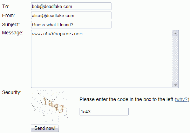
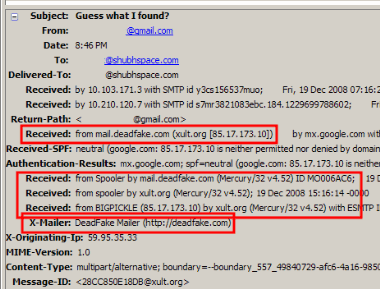
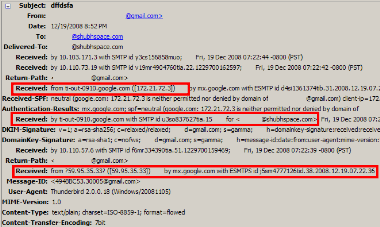
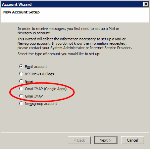
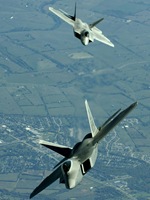
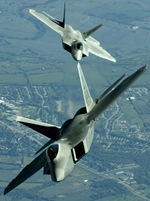
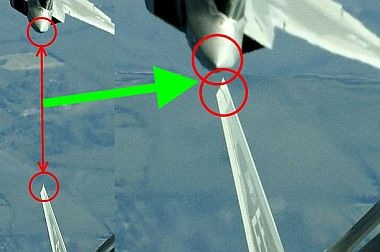




![Flexible Manufacturing Systems [F.M.S] Flexible Manufacturing Systems [F.M.S]](http://lh4.ggpht.com/shubhpicasa/SQPkg8ydpxI/AAAAAAAABBU/chNzY6Pgqmg/20080402fms06_thumb%5B4%5D.jpg?imgmax=800)
![Flexible Manufacturing Systems [F.M.S] Flexible Manufacturing Systems [F.M.S]](http://lh4.ggpht.com/shubhpicasa/SQPkjCaQYLI/AAAAAAAABBc/GUeLFYra_Qk/20080402fms07_thumb%5B3%5D.jpg?imgmax=800)
![Flexible Manufacturing Systems [F.M.S] Flexible Manufacturing Systems [F.M.S]](http://lh5.ggpht.com/shubhpicasa/SQPkk2haCvI/AAAAAAAABBk/j6muYE-5wXM/20080402fms08_thumb%5B3%5D.jpg?imgmax=800)
![Flexible Manufacturing Systems [F.M.S] Flexible Manufacturing Systems [F.M.S]](http://lh5.ggpht.com/shubhpicasa/SQPf0QiMc0I/AAAAAAAABBw/0hbdyezzt0w/20080402fms05_thumb.jpg?imgmax=800)
![Flexible Manufacturing System [F.M.S] Flexible Manufacturing System [F.M.S]](http://lh4.ggpht.com/shubhpicasa/SQPYrxLZfEI/AAAAAAAABAo/83sZ_dcQrvc/20080402fms01_thumb1.jpg?imgmax=800)
![Flexible Manufacturing System [F.M.S] Flexible Manufacturing System [F.M.S]](http://lh6.ggpht.com/shubhpicasa/SQPYtke4SJI/AAAAAAAABA0/PPRX05jKQf4/20080402fms02_thumb1.jpg?imgmax=800)
![Flexible Manufacturing Systems [F.M.S] Flexible Manufacturing Systems [F.M.S]](http://lh6.ggpht.com/shubhpicasa/SQPYvrW0aVI/AAAAAAAABA8/8zvcoXS3H64/20080402fms03_thumb1.jpg?imgmax=800)
![Flexible Manufacturing System [F.M.S] Flexible Manufacturing System [F.M.S]](http://lh3.ggpht.com/shubhpicasa/SQPYxa06rTI/AAAAAAAABBE/4uW2PA1Mnuk/20080402fms04_thumb2.jpg?imgmax=800)